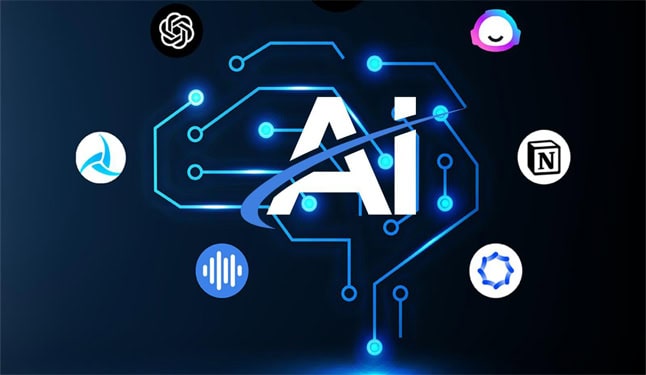
Internet today has become a primary necessity for us, much like food and clothing. Its an integral way to keep ourselves connected with the outer world; a necessity so crucial yet revolutionizing that we are often now referred to as the “cyber civilization”. Crazy right? But what’s even crazier is the ease with which everything we hold sacred and confidential- personal information, security details, essential company data- can be taken away from us with just a click of the keyboard.
With technology providing us with infinite benefits, it can be disheartening to believe that potential threats are so easy to fall prey to. With the internet being such an integral part of our social and personal fabric, it’s essential for us to also be aware of the risks, threats and crimes it exposes us to. Cybercrime is on the rise now more than ever. This steady rise highlights the flaws in devices and services we’ve come to depend on in our daily lives. This concern forces us to arm ourselves with proper knowledge about cyber security, why it’s essential, and what measures should be taken to stay secure from these crimes.
What exactly is Cyber Security?
Cyber security is a discipline that covers how to defend devices and services from electronic attacks by nefarious actors such as hackers, spammers, and cybercriminals. These digital attacks are usually at accessing, changing or destroying sensitive information; extortion of money from business users through ransomware; or just interrupting normal business processes.
Implementing effective cybersecurity measures has become increasingly difficult due to the growing number of devices compared to the human population, alongside the rise in innovative attack methods. As technology advances, security issues pose risks not only to individuals but also to societies and organizations. Cybersecurity is vital in today's digital landscape, as nearly every aspect of our lives depends on technology for social and economic stability.
Cyber-attacks can lead to severe consequences, including financial losses, damage to reputation, and even loss of life in critical sectors like healthcare and energy. Therefore, cybersecurity plays a crucial role in safeguarding personal data, protecting essential infrastructures, and ensuring the confidentiality and integrity of sensitive information.
Why is it Important?
Cybersecurity is the technological counterpart of the cap-wearing superhero. Effective cybersecurity saves the day at the right time by preventing damage to critical systems and keeping your organization up and running despite any threats that might come its way. If companies and individuals need their systems secure and their information confidential, cyber security is going to be their best friend.
How Does Cyber Security Work?
To know the working of cyber security, it can divided into a series of subdomains:
Application Security
In simpler words, application security secures your applicationsagainst any threats by implementing different defenses in an organization’s software and services. These defenses require cybersecurity experts to write secure codes, design secure application architectures, implement robust data input validation, and more, to protect the organization from chances of unauthorized access or modification of application resources.
Cloud Security
In this, secure cloud architectures are created for companies using cloud service providers including Amazon Web Services, Google, Azure, Rackspace, etc.
Identity Management and Data Security
This subdomain focuses on activities, frameworks, and processes, enabling authentication and authorization of legitimate individuals to an organization’s information systems. The measures include implementing powerful information storage mechanisms that secure the data, whether in transition or residing on a server or computer. This subdomain is also a prominent user of two-factor and multi-factor authentication.
Mobile Security
As more people rely on mobile devices, mobile security is becoming increasingly essential. This subdomain is responsible for protecting organizational and personal information stores on mobile devices like tablets, cell phones, and laptops from different threats like device loss and unauthorized access.
Zero Trust
This is a cybersecurity strategy where every user is verified, and each connection is authorized by the organization. There is no by default access provided to any user. Under this model verification is required at every step and from every source regardless of their position inside or outside the network perimeter.
What are the Varied Forms of Cyber Attacks
Cybersecurity threats are continually growing in volume and complexity. The more sophisticated our defenses become; the more advanced cyber threats evolve. Mentioned below are a few of the most common and malicious types of cyber-attacks.
Malware
This is a type of harmful software designed to compromise systems, often stealing information or disrupting operations.
Ransomware
Ransomware is a type of malicious software that is designed to extort money by blocking access to files or the computer system until the ransom is paid.
Phishing Attacks
Phishing is the practice of sending fraud emails highly resembling emails from reputable sources. The aim of these emails is to fish sensitive data, such as credit card numbers and login information. It thrives on human vulnerability and error and is the most common cyber-attack.
Social Engineering
This is a tactic that cyber criminals use to trick individuals into revealing sensitive information by impersonating a legitimate entity to gain access to personal information, which can then be used against an individual or the entire organization.
Insider Threats
Instead of threats coming from outside the organization, insider threats, as the name suggests, are threats that come from within. Threat actors in this can be nefarious or simply negligent individuals, but the threat comes from someone who already has access to sensitive data.
DDoS Attacks
DDoS attacks are Distributed Denial of Service Attacks, which are unique as they attempt to disrupt normal operations not by stealing, but by flooding computer systems with so much traffic that they become overloaded and unable to function properly. The goal is to simply prevent the user from operating or accessing their own system.
Advanced Persistent Threats (APTs)
APTs are the cyber threats that are prolonged, and sophisticated attacks conducted by cyber criminals with an abundance of resources at their disposal. These attacks mostly are done on government entities, and nation states as these threats often use multiple attack vectors to achieve their objectives.
Impact of Artificial Intelligence on Cyber Security
Among all the cyber-attacks explained above, the impact of artificial intelligence on cybercrimes looms large. The rise of artificial intelligence is revolutionizing numerous sectors in every sense, but it’s also simultaneously being used by bad actors as a tool to fuel more sophisticated cyberattacks and increase their volume, as exemplified by the rise in AI-enhanced social engineering and the substantial financial impact of data breaches. For instance, gen AI has enhanced social engineering to an extent where attackers can now generate highly realistic phishing emails or deepfakes to lure employees into sharing confidential information or credentials.
The increasing threats of cybercrimes as well as the rising innovations in cyberattacks are pushing companies to realize the importance of cybersecurity and to opt for cyber security experts who can identify these potential threats and protect valuable data. Based on this current scenario, it comes as no surprise that the cybersecurity market is booming. At a market share of $215 billion in 2024 to $697 billion by 2035, and a growth rate (CAGR) of 11.3%, the cybersecurity market is witnessing astounding growth.
Opportunities and Future of Cyber Security
With the market at an all-time high, there are plenty of opportunities in the cybersecurity sector as more businesses move to cloud, increase the use of IoT devices, and promotes remote work. New techniques like Zero Trust security are becoming increasingly popular and creating opportunities for cyber experts to create advanced frameworks.
Key Players in the Evolving Cybersecurity Landscape
Here’s what prominent industry players are doing to remain competitive and profitable in the market.
Cisco Systems
Cisco is offering comprehensive internet security solutions based on network-related areas by adopting upcoming technologies including machine learning and advanced analytics. Additionally, in September 2023, Cisco signed an agreement to purchase a cybersecurity firm ‘Splunk’ for USD 28 billion.
IBM
IBM is offering cybersecurity solutions and services including threat management, data protection, identity and access management, and endpoint security, which primarily focuses on AI, automation and cloud.
Microsoft
Expanding its work portfolio from products and services to cybersecurity solutions, Microsoft is all set to provide solutions including Microsoft Defender and Azure Security Center for cloud security and threat protection. They are also onboard for adopting the Zero Trust security.
Best Practices to Strengthen Your Cybersecurity Strategy
To effectively avoid cyberattacks, organizations should implement these best practices:
Regular Software Updates
Updating software and operating systems regularly help in patching vulnerabilities and enhancing security measures against potential threats.
Strong Password Policies
Creating strong and unique passwords for each online account also enhances cybersecurity, as weak or stolen passwords can be easily exploited by threat actors.
Employee Training
Employees should be regularly trained about cybersecurity awareness, including helping them recognize phishing attempts as well as making them understand safe online practices.
Data Backup Procedures
Regularly back up important data using the 3-2-1 rule: keep three copies of your data on two different types of storage media with one copy stored off-site or in the cloud.
Implementing Multi-Factor Authentication (MFA)
Multi-factor authentication involves multiple identification forms before providing access to any account. This reduces the risk of unauthorized access.
Conclusion
As we become more technology dependable, cybersecurity is bound to become an essential part of our life as well. To stay safe from cyber threats it’s highly essential to adopt strong cybersecurity technologies. With the market at an all-time high, the growth and opportunities are aplenty. Below figure highlights the cybersecurity landscape.




